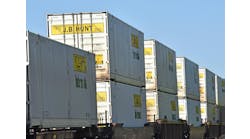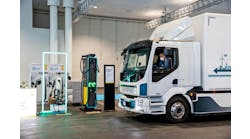A complex merger arrangement in the world’s second largest air market has sparked at least one protest. Hong Kong Air Cargo Terminals Ltd. (HACTL) says Cathay Pacific’s acquisition of 100% of Dragonair would be destabilizing to the Hong Kong market.
Cathay Pacific has already applied to the Airport Authority for a self-handling air cargo facility at Hong Kong International Airport, says HACTL. The combined cargo volume of the two airlines represents 40% of Hong Kong’s current air total. The merger and subsequent development of a cargo self-handling facility would, therefore, create a dominant, vertically integrated air cargo operation that HACTL feels would negatively impact airlines, cargo terminal operators, freight forwarders and others.
With 25.77 billion tonne kilometers of freight handled in 2005, China ranks second only to the U.S. in air cargo turnover, according to statistics released by the International Aviation Organization and the General Administration of Civil Aviation of China. International route turnover reached 8.38 billion tonne kilometers in 2005, up 9.2% over 2004.
In the first five months of 2006, HACTL handled 276,902 tonnes of import freight and 549,933 tonnes of export freight. It also handled 161,555 tonnes of transshipment freight in the period. This represents a 4.2% increase in import freight volumes, a 6.2% increase in export volumes and a 10.2% increase in transshipments for the period.
While HACTL urged careful consideration before approval of the merger, Stephen Ip, secretary for economic development and labor, welcomed the shareholding realignments saying the move would strengthen Hong Kong’s role as an aviation hub. He added that the combination would enhance efficiency.
When pressed on the issue of market dominance, Ip told Xinhua, “[Cathay Pacific and Dragonair] have to compete with other airlines, whether foreign or Mainland airlines. There is very keen competition in the aviation sector.”
Cathay Pacific’s cargo turnover in 2005 was HK$ 11.6 billion ($1.5 billion), up 9.8% over 2004. Its cargo capacity increased 11.2% on passenger aircraft and 14.2% on freighters. The airline carried 1.118 million tonnes of cargo in 2005, up 15%.
In the month of May, Cathay Pacific reported it carried 94,950 tonnes of freight, a 5.3% year-on-year increase. The volume figures topped capacity increases of 5%. Dragonair carried 33,812 tonnes of freight in April. For the first quarter, Dragonair reported freight volumes were up 8.1%. “We carried the second highest amount of cargo in our history in March at 36,262 tonnes,” said Stanley Hui, CEO. “The rise was a reflection of the return to normal of manufacturing and trading activity after the Chinese New Year holidays in the previous months,” he continued.
The deal calls for Air China to acquire 10.16% of Cathay Pacific which, when combined with its subsidiary China National Air Cargo’s holdings, will bring its total to 17.5%.
Cathay Pacific will increase its holdings in Air China from 10% to 20% and will acquire the remaining 82.21% of Dragonair.
Dragonair will continue as a brand, but under Cathay Pacific management.


